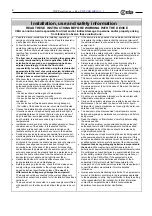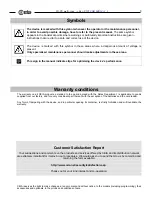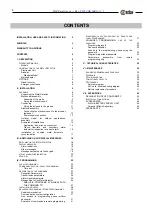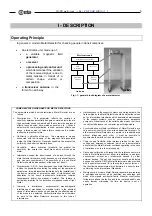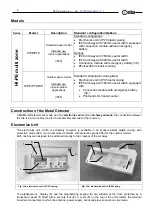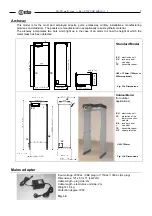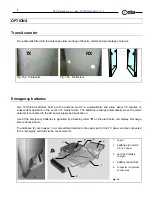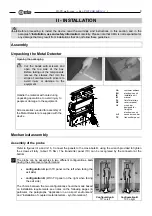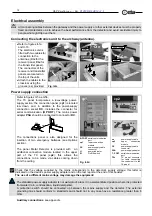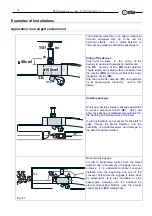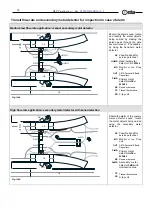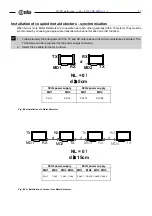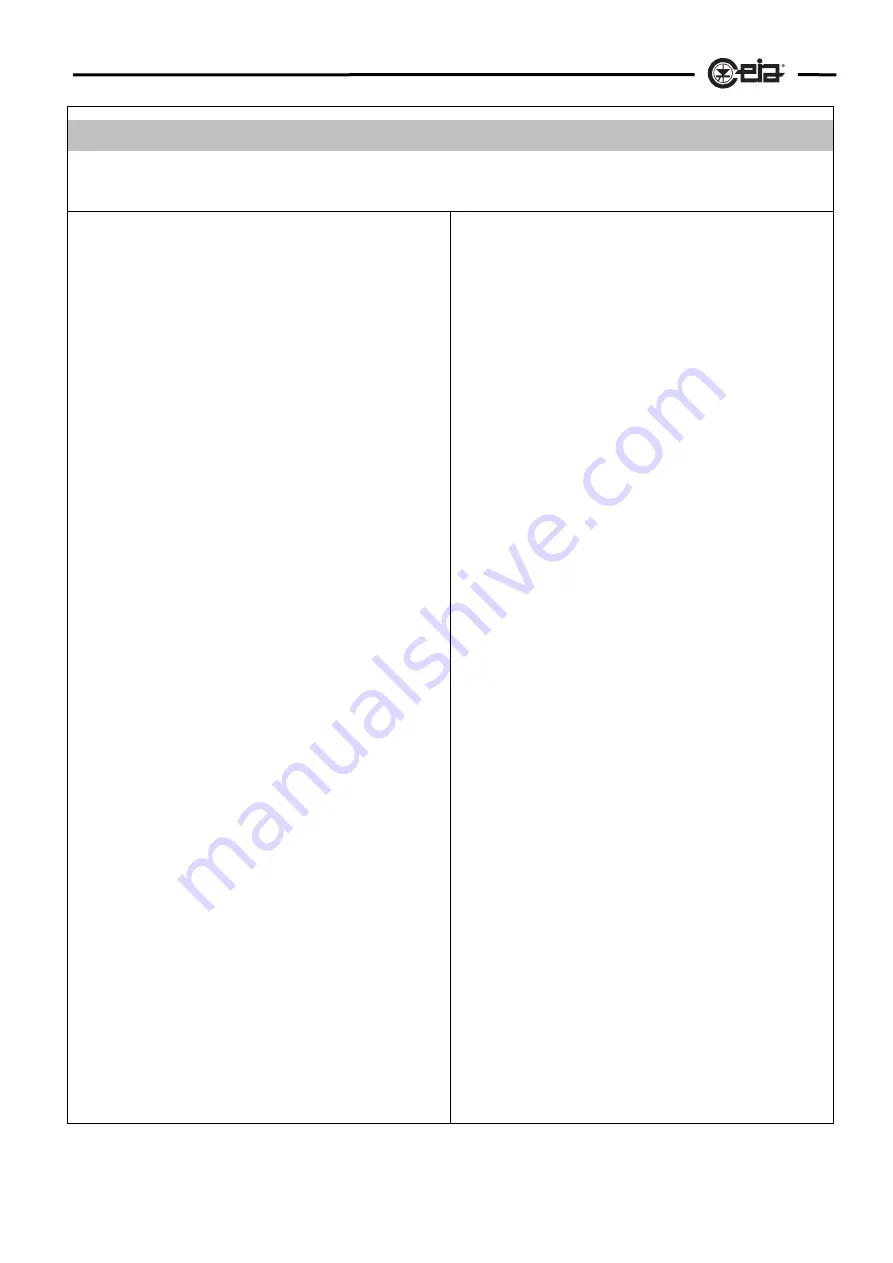
HI-PE multi-zone --- Rev.
FI 050 GB 60K10 v2_1
2
Installation, use and safety information
READ THESE INSTRUCTIONS BEFORE WORKING WITH THE DEVICE
CEIA can not be held responsible for direct and/or indirect damage to persons and/or property arising
from failure to observe these instructions.
•
Read this manual carefully before installing, operating or
carrying out maintenance on the device. Keep this booklet in
a safe place for future reference.
•
Follow the instructions contained in this manual for all
operations relating to installation, use and maintenance of the
device. CEIA cannot be held responsible for any damage
resulting from procedures which are not expressly indicated in
this manual.
•
The final user is responsible for selecting the appropriate
security level/sensitivity for their application. After this
selection has been made, and programming has been
adjusted accordingly, it is also the final user's
responsibility to verify calibration using the test object(s)
appropriate to the level of security selected. Additionally,
this test should be carried out periodically to insure no
changes have occurred in the equipment.
•
Whenever there is any suggestion that the level of protection
has been reduced, the device should be taken out of service
and secured against any possibility of unintentional use, and
authorised service technicians should be called.
The level of protection is considered to have been reduced
when:
- the device shows visible signs of deterioration;
- the device does not operate correctly;
- the device has been stored for a long period in sub-optimal
conditions;
- the device has suffered severe stress during transport;
- the inside of the device has come into contact with liquids.
•
Choose the installation site carefully. Avoid placing the device
in locations where it may be directly exposed to sunlight, in
unventilated areas or in places that are close to sources of
heat. In addition, avoid places that are subject to vibrations,
dust, humidity, rain and excessively high or low
temperatures.
•
Installation must be carried out by qualified personnel. Given
the dimensions of the device, it is requested that the
installation site be kept clear while work is carried out to
facilitate setting it up and to avoid any harm to third parties.
•
Position the device as far away as possible from sources of
electromagnetic interference such as transformers or motors.
•
When installation is completed, the detector must be
anchored to the ground in a stable manner and not subject to
vibrations (use expansion screws inserted through the
anchoring holes in the base of the panels). All connecting
cables between the gateway and the power supply or other
external devices must be properly fixed and protected so as to
achieve the best performance from the detector and avoid
accidental injury to people who might trip over them.
•
Handle the device with care and without excessive force
during installation, use and maintenance
•
Before powering up the device, check that the mains power
supply voltage corresponds to the voltage shown on the
device's electrical specifications plaque.
The use of a
different mains voltage may damage the equipment!
The device should be connected to the mains voltage only
after all the connections required for full installation have been
carried out.
•
The device must be connected to a power supply circuit fitted
with a switch or other device which allows the power to be cut
off.
•
If the device is to be powered via an external autotransformer
to regulate the voltage, ensure that the common terminal of
the autotransformer is connected to the neutral of the power-
supply circuit.
•
The power-supply plug must only be inserted into a socket
fitted with an earth/ground connection.
Any break in the safety conductor, either inside or outside the
device, or disconnection of the earth/ground safety terminal,
will render the device dangerous. Intentional cutting or
disconnection is strictly forbidden.
•
Always remove the plug by hand when disconnecting the
power supply cable, never by pulling on the cable.
•
The standard power-supply adapter is not waterproof: place it
in a ventilated position where it is protected from water (rain,
condensation, liquid detergents)! There is a risk of electric
shocks for people and damage to the equipment!
•
This device contains electrical and electronic components,
and may therefore be susceptible to fire. Do not install in
explosive atmosphere or in contact with inflammable material.
Do not use water or foam in the case of fire when the device
is powered up.
•
To prevent damage by lightning, disconnect the power supply
cable during thunderstorms.
•
Do not use in an explosive atmosphere. Avoid contact with
inflammable or explosive material.
•
Carry out the periodic maintenance regularly (see section on
Maintenance). Do not wash the device with water, liquid
detergents or chemical substances. Use a slightly moist, non-
abrasive cloth for cleaning.
•
The device must be disconnected from all power sources
before undergoing any maintenance or cleaning, and before
being moved.
•
Read the chapter on “Maintenance” carefully before calling
the service centre.
Whatever the problem, only specialised service personnel
authorised to work with CEIA equipment should be called.
•
Any damaged parts of the device should be replaced by
original components only.
•
Any maintenance or repair involving the device being opened
while powered should be avoided as far as possible: if this
becomes inevitable, the operation must be carried out only by
qualified personnel who are fully aware of the risks involved.
•
Important advice regarding any batteries incorporated in
the device
. When replacing: use CEIA spare parts or
batteries with equivalent electrical/mechanical characteristics.
Do not dispose of used batteries in general rubbish bins; use
public battery collection facilities as per local regulations, or
return them to a CEIA office. If the equipment is to be
disposed of, remove the batteries and dispose of them
separately. CEIA will not hold itself responsible for the
improper use of the batteries incorporated into its equipment:
consult the battery manufacturer for more detailed
information.
•
Human exposure to electromagnetic fields. The equipment is
pre-set in the factory according to the regulations applicable
in the destination country. Any modification to this pre-setting
is the responsibility of the installer. For further information
contact the competent bodies. CEIA’s technical/sales
department can provide further clarification.


